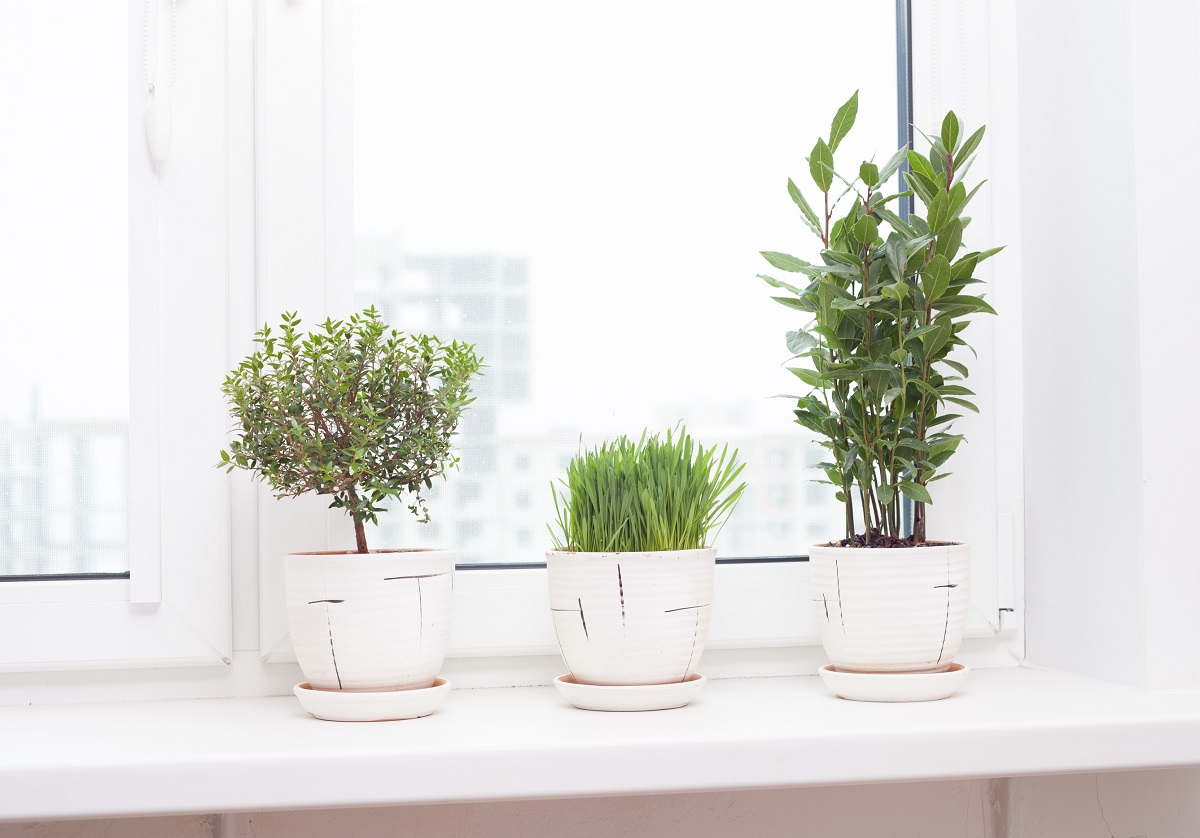WRITER | RACHEL WHITE
Though the warm summer temperatures have passed, that doesn’t mean that our taste for fresh ingredients has gone with it. Our Michigan green thumb doesn’t have to freeze off when the snow flies. Just bring it inside. Add fresh herbs to winter pasta, soups, and roasts all season long with these simple tips for growing your own indoor herb garden.
Anyone who wants to save money on buying expensive fresh herbs at the supermarket and feels like flexing that green thumb a little can cultivate them. Do you live in an apartment with no outdoor space? Here’s your chance to grow! For the same effort as houseplants, you’re rewarded with the convenience of growing your own food.
Indoor herbs need plenty of sunlight – at least four to six hours a day. The kitchen is a no-brainer, since that’s where you’ll be using the herbs and there’s counter space, but make sure they’re not in places that get too hot, like near the oven. A bright, airtight windowsill is best. North-facing windows don’t get enough sun; south-facing is best, and don’t let the foliage touch the windows or they’ll catch a chill.
Not only are the herbs beautiful, but the containers can be, too. You can use the basic terra cotta, or come up with some really unique and interesting alternative containers. As long as you have proper drainage and about 6-12 inches in soil depth, you can have a lot of fun with it! Have the kids help paint old tin cans, or repurpose vintage coffee pots or teacups. Try growing them in a wooden trough for a more rustic look. If you can’t put a hole in the bottom, make sure to put plenty of pebbles in the bottom for proper drainage – herbs don’t like wet roots.
Next, think about the soil. A basic potting mix will work for most herbs, but adding perlite will boost drainage. Make sure to water only when the soil feels dry; the number one cause of death is overwatering. Also, use a fertilizer made for edible plants every month or so.
Lastly, and most importantly, the plants. It’s harder to grow plants from seed, so if you’re new at this, check at your local garden center for healthy plants. If your best friend has herbs, you can propagate your own by taking a five-inch cutting, trimming off any bottom leaves, and placing in water until roots form. At that point, you can safely plant them into pots. Make sure to water frequently until the new plants are well established and growing in the containers and location you’ve chosen. When you use the herbs, cut no more than a third of the plant at a time, leaving some large leaves for the plant to use as the energy center to generate new growth. Clip them regularly; you’re growing them to use, and it helps the plant grow.
Deciding which herbs you’d like to grow is a fun decision. Keep it basic with mint and basil, or get exotic with lemongrass and coriander for international cuisines. Some of the easiest:
Chives: Very prolific and not too finicky about sunlight. It gets a pretty purple flower.
Mint: Keep this guy in his own container, and he will fill it right up.
Basil: This one likes it hot – keep the plant in your sunniest window.
Parsley: Once you get it started, this one is easy to maintain.
Lemongrass: This one is a bit of a cheat because all you need is water. Buy a stalk at the market, trim the top, put it in a glass with three inches of water, and voilà, many stalks shoot up for you to enjoy.
There you have it. For those who want it even easier, there are great kits on the market (Christmas present idea!). If you start now, you’ll be enjoying their beauty in weeks and cooking with them in no time. Happy growing!








